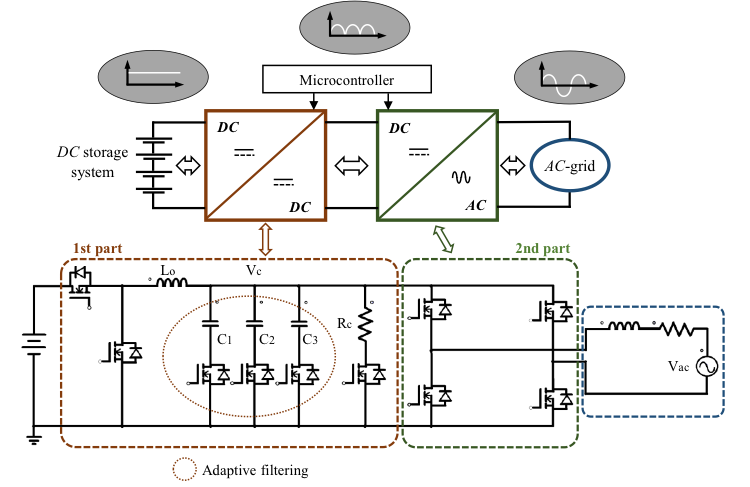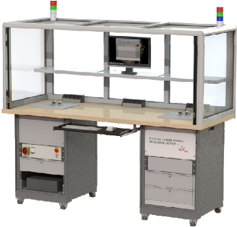Systems and energy
The team focuses on the study and management of electrical systems on a broad scale: components, power converters, but also the energy consumption of individual housings. New components are developed, for the conversion of electrical energy. Power converters integrating new wide gap components are studied. The optimization of the power consumption in a home is studied using storage systems associated with power converters and by integrating systems of operation detection and means of data transmission via the power grid.
This research activity focuses on: the power component, high-efficiency converters, management of consumption and electrical operation at the housing level.
Power components
Development of a Switching bench: Analyzing the failure modes of a MOSFET in SiC.
MOS SiC in short-circuit mode.
3D modeling of the lifetime of charge carriers for power electronics:

Management of electrical consumption and operation in a home
Optimizing the cost of electricity consumption
The management of the energy consumption in the home is studied under several approaches. The first consists in optimizing the cost of electricity consumption in the individual home. This approach is based on the possibility of storing or restoring electrical energy with the aim of reducing the electricity subscription. The management is carried out according to the prediction of the consumption in order to store or restore the energy at the most relevant moment. The possibility to control the switching on or off of certain domestic appliances allows to improve the management.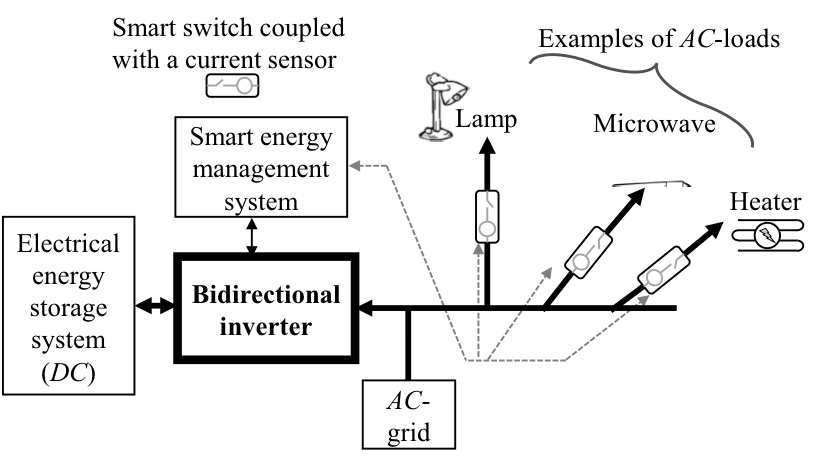
Home control using PLC communication
Controlling the devices requires setting up a transmission between the device and the management system. We have studied the possibility of using the electrical network as a transmission medium. The quality of the transmission by PLC is variable according to the architecture of the electrical network. We sought to evaluate the high-speed PLC transmission in the home based on a deterministic modelling of the multi-path type. This choice requires knowledge of the network architecture. A system has been developed to measure the size of the different branches of the network. The obtained modeling allows to evaluate the possible bandwidth and the frequencies that are favourable to the PLC transmission.Home management can be part of a more global management of the network at the scale of a district. Communicating meters currently installed in France will in the future allow the load of the distribution network to be taken into account for the management of a housing unit. The PLC is used on the distribution network as a means of communication between the meters and the concentrator placed in the distribution substations. In order to test PLC systems before their installation, an emulator has been developed taking into account the real characteristics of the power grid.
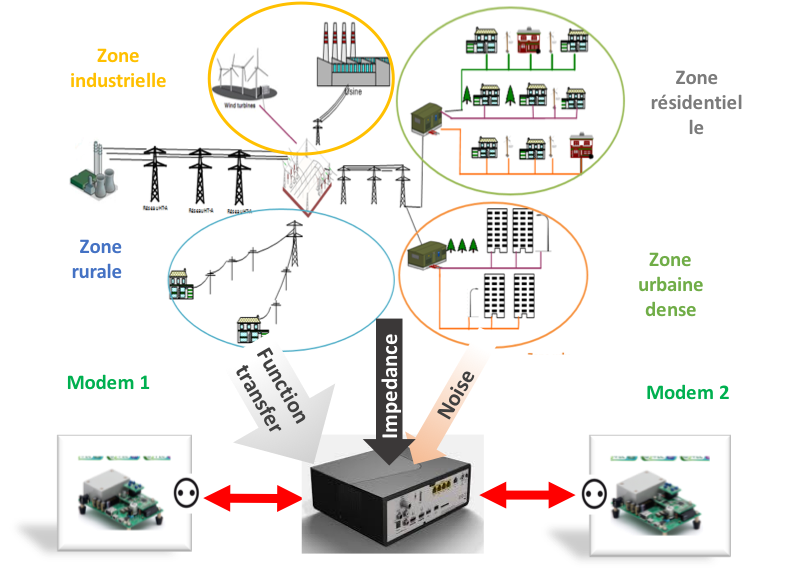
Electrical home monitoring from a single measuring point
The management of electrical energy in the home requires measuring the current in the various branches of the electrical installation. We are studying the possibility of detecting and measuring the device in operation from a single measuring point. This project is carried out in collaboration with the PRISME laboratory, which has acquired expertise in the fine modeling and characterization of electrical currents for the purpose of identifying consumers present on the network. Algorithms are developed for the monitoring of the electrical network of an individual home. An electrical signature database is created.It is a question of trying to exploit the evolution of the electrical parameters (current, voltage and deducted quantities) to measure the electrical energy of each electrical device, to detect a defect or a malfunction. The GREMAN laboratory has developed an expertise in the characterization of electrical installations, by measurement and identification of physical parameters as well as in the modeling of loads and their consumption (CPLDIAG and ECCO projects).
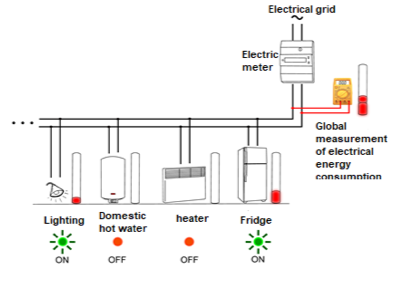

High-efficiency converters
Totem-Pole converter
The use of wide-gap components opens up new possibilities for power converters, such as improving efficiency, designing new topology, increasing switching frequency and reducing the size of the converters. In this context, we have worked in collaboration with ST Microelectronics on the design of a Totem-pole AC-DC converter based on SiC and Thyristor components. The targeted application is automotive battery chargers. An inrush current management was developed and an EMC study was carried out.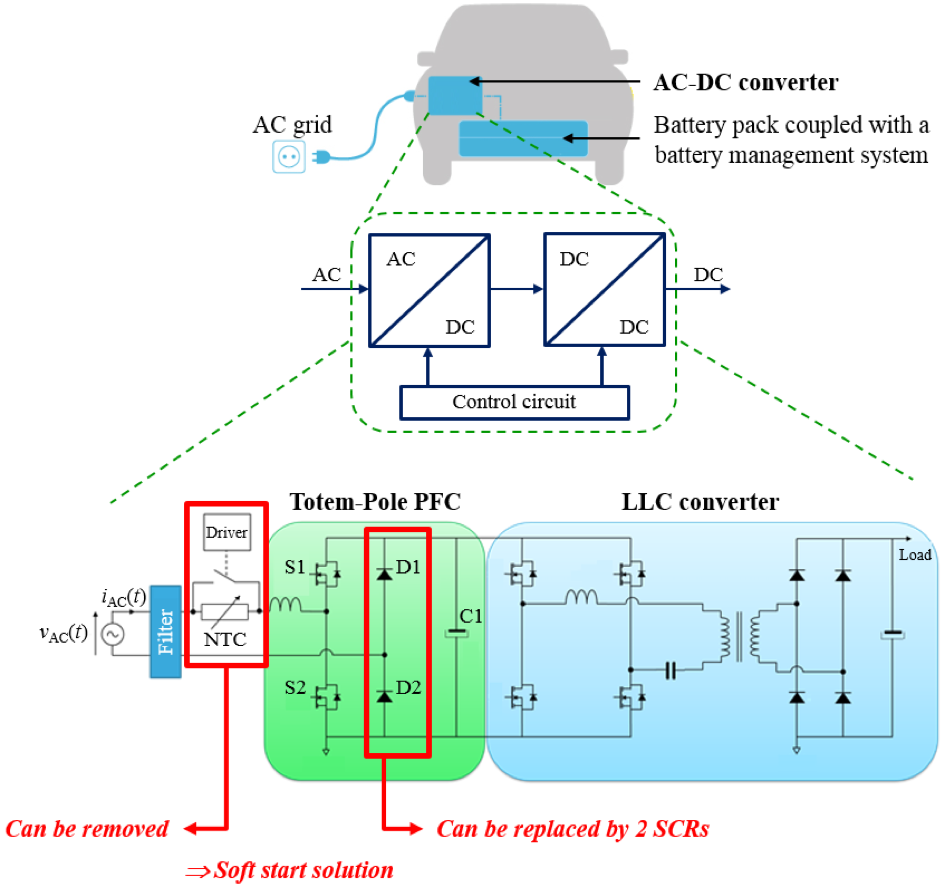
Bidirectional AC/DC converter
We are working in parallel on a more classical reversible AC/DC converter architecture, operating at a switching frequency of about 300kHz based on SiC transistors. A control strategy is developed to minimize the harmonic distortion of the voltage in inverter mode. This control allows for a single high-frequency switching cell in the converter. The objective is to minimize common mode currents in the 150kHz-30MHz band.
This reversible converter can be inserted in the project of electrical energy management in the home. According to the energy consumption management algorithm, this converter will store or inject electrical energy from the network.
